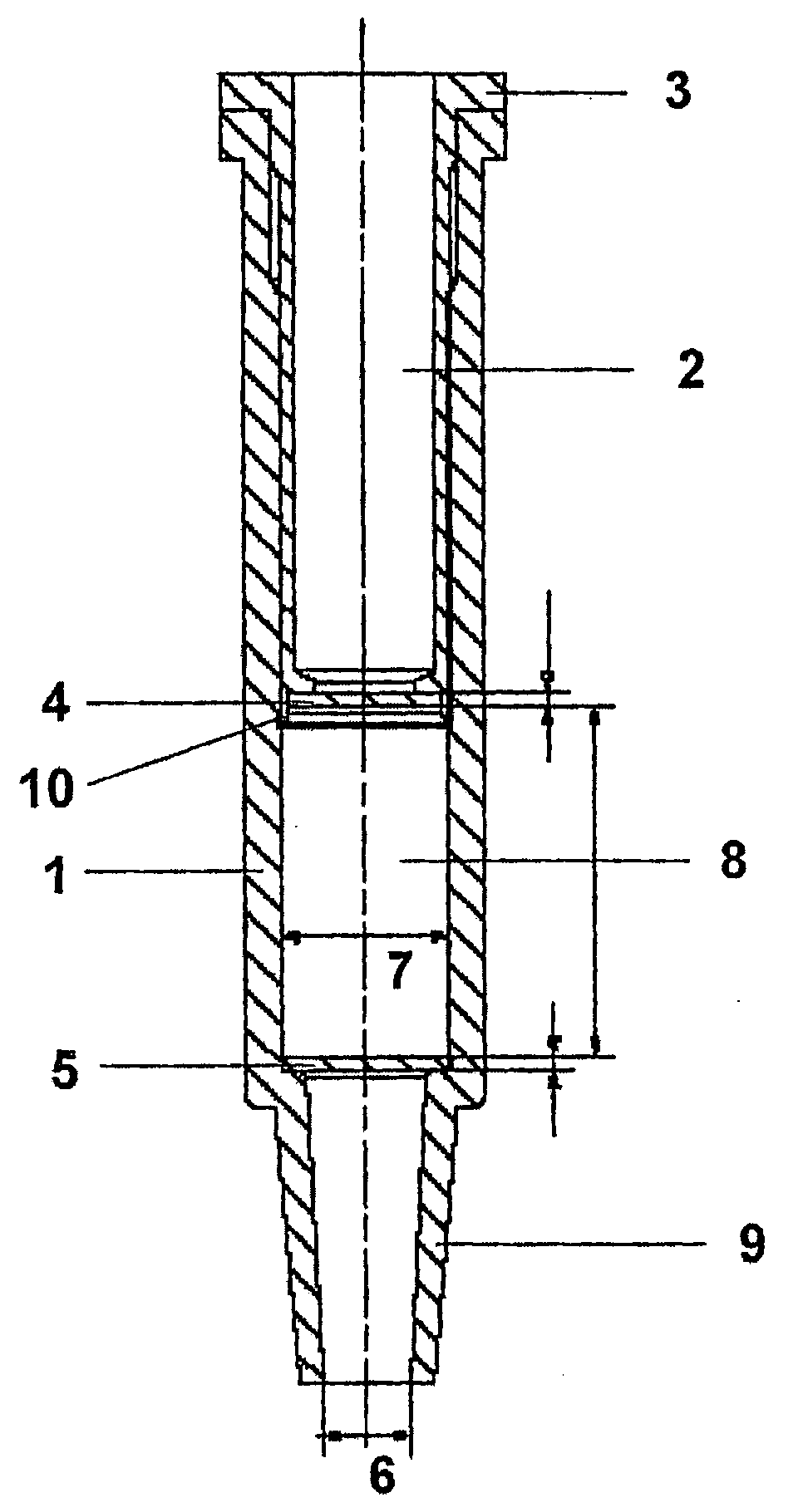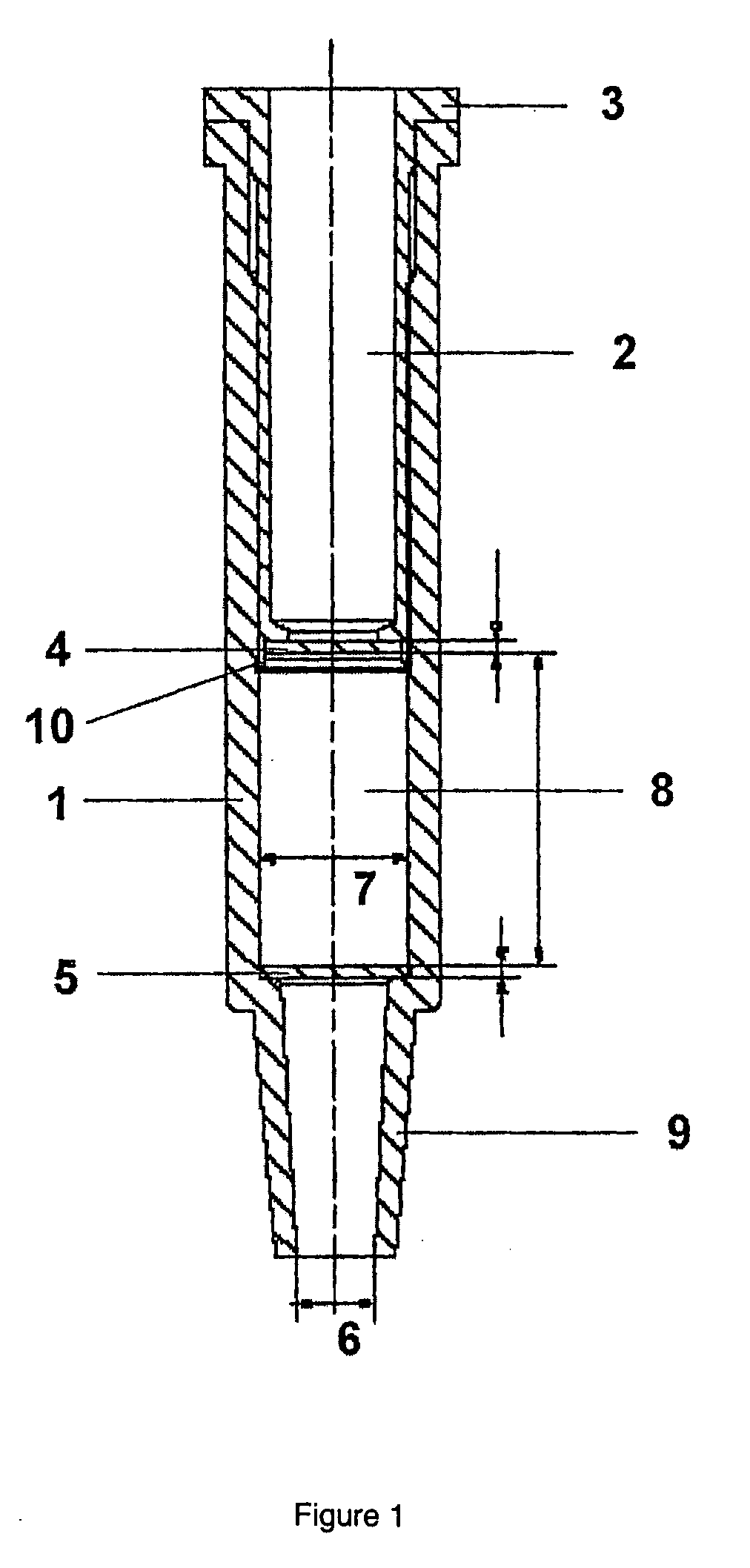Chromatography column
a chromatography column and column body technology, applied in the field of chromatography columns, can solve the problems of inside the column, elasticity of the packing, and rapid and then slower expansion of the packed gel sedimen
- Summary
- Abstract
- Description
- Claims
- Application Information
AI Technical Summary
Benefits of technology
Problems solved by technology
Method used
Image
Examples
example 1
[0039]A total of 96 chromatographic columns according to the invention in the preferred embodiment according to FIG. 1, having a gel chamber inner diameter of 5 mm and a distance of 11 mm between the upper and lower filter plates, corresponding to a volume of the packed chromatographic material of approximately 216 / μL, and a total length of 38 mm were fitted with circular cutout filter plates by Freudenberg, model FO2472. The thickness of the PP / PE filter plates was approximately 0.45 mm, and the average pore size was approximately 17 μm. The upper filter integrated into the lower end of the sample chamber had a diameter of 4.6 mm, and the lower filter had a diameter of 5 mm. The filter plates were introduced into the separately provided column body and sample reservoir by use of a small insertion plunger of matching diameter. The column bodies were then placed symmetrically in rows of eight on two matching column holding plates having the dimensions of 96-well microtiter plates. T...
PUM
| Property | Measurement | Unit |
|---|---|---|
| diameter | aaaaa | aaaaa |
| width | aaaaa | aaaaa |
| inner diameter | aaaaa | aaaaa |
Abstract
Description
Claims
Application Information
 Login to View More
Login to View More - R&D
- Intellectual Property
- Life Sciences
- Materials
- Tech Scout
- Unparalleled Data Quality
- Higher Quality Content
- 60% Fewer Hallucinations
Browse by: Latest US Patents, China's latest patents, Technical Efficacy Thesaurus, Application Domain, Technology Topic, Popular Technical Reports.
© 2025 PatSnap. All rights reserved.Legal|Privacy policy|Modern Slavery Act Transparency Statement|Sitemap|About US| Contact US: help@patsnap.com



